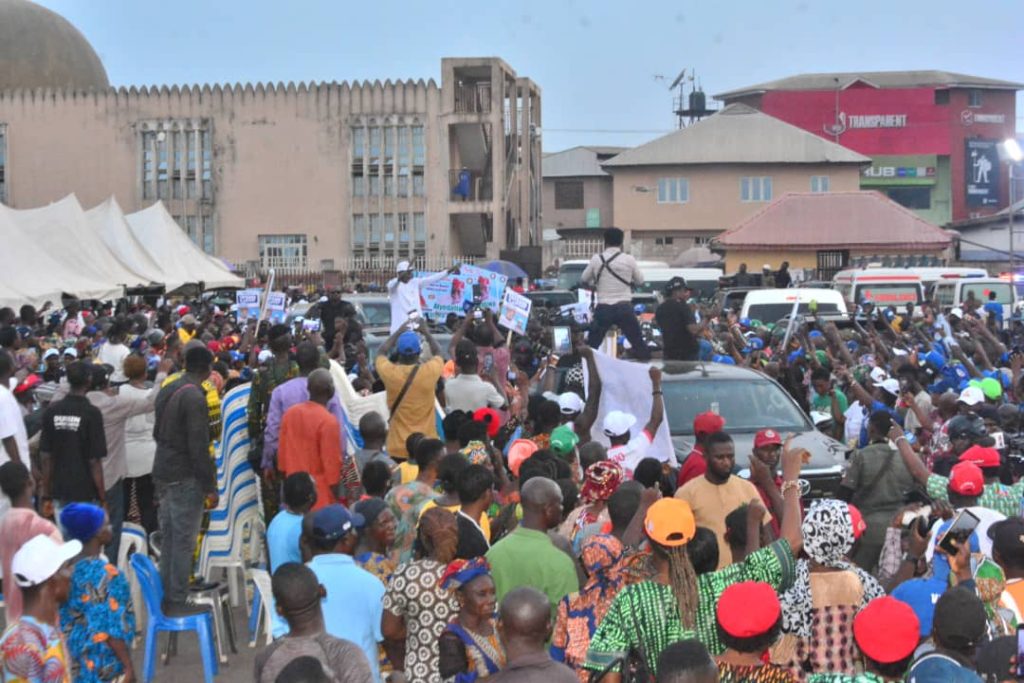The good and ugly faces of Ibadan
By Taiwo Abiodun
The city of Ibadan is known and popularly called a city “scattered among seven hills”. Taiwo Abiodun who visited BOWER’S TOWER the tourist centre that has been in existence for a very long time and reports.
Have you ever been to Ibadan?.Have you ever been to the University of Ibadan Zoological Garden and Agodi ?.
If yes then have you ever been to Bower’s Tower? if no, then you have not completed your tourism . In Ibadan you would see a near -neglected Tourist Center that can generate millions of naira to the state government. Yes, Ibadan the City “scattered among seven hills”, is synonymous with Bower’s Tower. Standing atop the Bower’s Tower one could see at a glance the four corners of Ibadan metropolis which gives a panoramic view of all the important and popular places in the ancient city. From here one can see a bird’s eye view of Gate, the University College Hospital (UCH), University of Ibadan, Adebayo, Cocoa House, Dugbe Market. Agodi Gardens, Iwo Road, Ife Road, Olorunsogo and the defunct Lagos /Ibadan Toll Gate. One could see far-flung places like Adamasingba, Felele, Yemetu , Adeoyo and many more that are visible to the naked eyes.Yes, the mentioned places could be far off but standing atop of this popular and attractive old Tower one could see these places and give a precise picturesque of them.
Standing atop, Prof J. P. Clark’s most memorable poem of the city comes to mind as The ugly beauty of the rustic corrugated iron roofing sheets of Ibadan, one could also see the ugly rustic iron roofing sheets of the ancient buildings of the city and it reminds one vividly of Prof J. P. Clark’s most memorable poem of the city.
This is Bower’s Tower on Oke –Are, the home of Ibadan’s illustrious Generalissimos, the city where Ibadan warlords settled in the 17th century.
Olawale’Niran who is a senior lecturer in one of Nigeria institutions described the place as historic and super he went down memory lane to tell how it looked like;”when I was young and in primary school my parents used to take us to the Tower at Oke -Are. They call it Bower Tower’s,it was named after a Colonial master that came to Yorubaland to oversee their affairs then..The place has become an attractive tourist centre . Then many were afraid to go there for there was a dreaded forest called Agala Forest (Igbo Agala) where according to stories , was a place where all sorts of atrocities took place in the 60s”.
Pa Akin Ade who lived in the vicinity for several years said ” I have been living in Oke Are since my youth . I know that Bower’s Tower was erected in the 1930s by the Ibadan Native Authority but was unveiled by Captain Robert Lister Bower who was then the Resident and Travelling Commissioner for Ibadan and the Interior of Yorubaland in the South Western Nigeria. I know and remember vividly that the hill was named after him.
He proudly stated “From the hill top we could view all the four corners of Ibadan and I learnt that that was where Bower was overseeing what was going on in the city”. Peter Eniyansunwon attested to what Akin said and added that ” this was where Bower was controlling and monitoring his government from here and other Yoruba towns.We learnt that the tower was named after the Colonialist ,Bower in appreciation of his contribution to the development and growth of Yorubaland ”.
BOWER’S TOWER
The over 60 feet tall tower is on the hill top of Oke Are in Igbo Agala ( Agala forest) area of Ibadan. It is the highest hilltop in the city. The Tower has about 47 spiral staircases, designed by one Taffy Jones in the early 30s. It was unveiled on December 15, 1936 by Sir Robert Tower. Written on the side of the tower are these words: “BOWER’s TOWER ERECTED DEC. 1936 IN HONOUR OF CAPTAIN ROSS L. BOWER 1ST RESIDENT AND TRAVELLING COMMISSIONER OF INTERIOR YORUBALAND (1893-1897). However, all the words written on the tower have faded with the names of ministers who had over time renovated the place.
Myths and legends have been created out of it. From the ordinary natives to the learned, scholars and researchers have coined out stories and mythological phrases around “Layipo”, that is The Tower! Thus it has become household words and common lingo of the ancient city. These have become part of the daily words and activities of the city. Therefore, it is common to hear such things as “Whoever comes to Ibadan and has not visited this Tower” (called Layipo) to view the city does not know Ibadan (Ibadan lo mo, o mo Layipo).
Mr. Omotayo Taiwo who owns and has run a bookshop in Beere for years said, “This is where we call ‘Layipo’ because one could see the nook and cranny of Ibadan from this Tower. You will turn round on the tower to view the whole Ibadan. It is interesting to know the meaning and the message.” Another resident, Madam Emily Ogunwole added that ‘Layipo’ means that when an Ibadan man asks for a favour and the other answers yes, don’t be sure because he has not added that he has agreed, that is Layiipo for you in Ibadan. And it means don’t trust an Ibadan man or don’t take them for their words until they have really told you that they have agreed and accepted your proposal, that is the second meaning of ‘Layipo’.”
According to Taiwo, the word ‘Layiipo’ was derived from the nature of the spiral steps which leads to the top of the Tower, which you have to turn round and round to get to the apex of the mountain. “It is these turnings that made it to be called Layipo”, he swore.
The Tower itself has become old and small. The building, though still strong, does not befit the standard of modern day structure due to its lack of space and , according to an insider, no one envisaged it would become so popular and notable when it was constructed, “We need to praise the authority that constructed it because there is no building constructed today that can rival this one except that it is not wide enough to accommodate two people to go up (the narrow stairs) at the same time.”
The sad aspect of the Bower’s Tower’s story is that the last times maintenance were carried out were under various military regimes in the country. This is displayed on the wall shown under successive ministers it was renovated by the Federal Ministry of Commerce and Tourism. For instance, it was renovated in 1996 by Rear Admiral Isaac Sunday Adeola, while Rear Admiral Jubril Kayode Ayinla had his turn in 1997 so also did Dr. Emmanuel Udogu in 1998. The last time was in 1999 by General Patrick Aziza. Since then nothing has been done.
GATE FEE
The gate fee and sightseeing charges are written on the building. For entrance, a student is charged N30 while an adult pays N50. For those who want to take pictures and video the scene, the charge is N100 and N500 respectively.
The building has become decrepit, while the paintings are faded, and some of the structures, like tents where one could relax, have collapsed and are no longer in use.
One of those who work in the place lamented that, “We make small money even people hardly pay, we have to plead, talk, and talk before they could pay the required fee.”
Another worker who pleaded for anonymity said, “For a long time it has been neglected and therefore was not patronised for social functions because of its poor condition. It was later leased out to a company yet it made little or no progress. I am aware that the state government is planning to do something before the end of this year because it is too shameful to see the place like this”.










